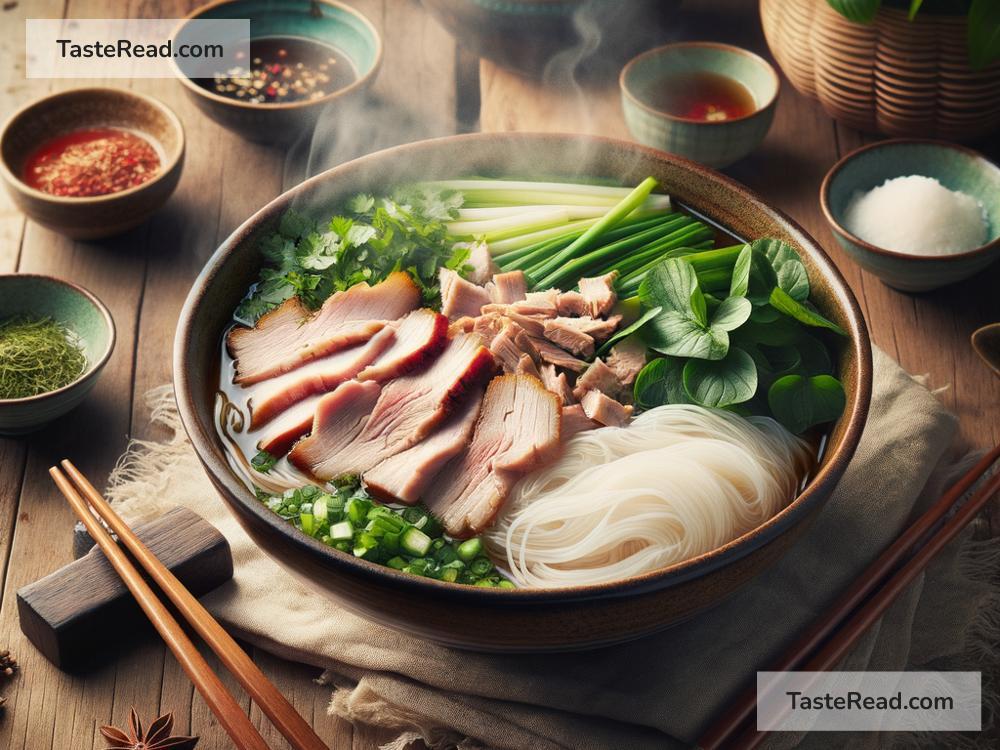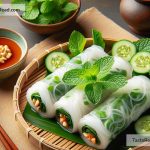How the Vietnamese Cao Lau Became a Local Delight
In the heart of Vietnam’s ancient town of Hoi An, amidst the lantern-lit streets and historical buildings, lies a dish that captures the essence of Vietnamese cuisine while telling a story of cultural exchange. This dish is Cao Lau, a unique noodle-based delight that is as much a treat to the taste buds as it is a journey through history. But how did Cao Lau come to be such a beloved local specialty? Let’s dive into the origins and evolution of this fascinating dish.
Origins of Cao Lau
Cao Lau’s roots are as mysterious and intricate as the alleyways of Hoi An itself. There are several theories about its origin, but most agree that it is a product of various cultural influences that have touched the port city of Hoi An over centuries. A popular theory suggests that Cao Lau was influenced by Chinese and Japanese traders who passed through Hoi An, which was a bustling trade hub. The Chinese brought with them the concept of noodles and roast pork, while the Japanese might have introduced the idea of using particular types of water in cooking, a practice crucial to the preparation of Cao Lau.
The Unique Preparation
What makes Cao Lau remarkably special is its preparation. The noodles, which are the heart of the dish, are unlike any other found in Vietnam. They are thick, chewy, and have a distinct color that comes from the addition of lye water, made from the ashes of local plants. Another essential element is the water used to prepare these noodles; it is traditionally drawn from the ancient Ba Le well, believed to give Cao Lau its unique taste and texture that cannot be replicated elsewhere.
Moreover, Cao Lau is not just about the noodles; it’s a symphony of flavors and textures. The dish is skillfully layered with thin slices of marinated and roasted pork, crisp leafy greens, fresh herbs, bean sprouts, and crunchy croutons made from dried Cao Lau noodles. A spoonful of savory broth is added just to wet the ingredients; this is not a noodle soup but a nuanced, textured experience.
Becoming a Local Delight
Cao Lau’s journey from an obscure regional dish to a celebrated local delight is deeply intertwined with Hoi An’s rise as a cultural and tourist destination. As travelers began to explore the charming streets of Hoi An, their quest for authentic experiences led them to the small, family-owned eateries serving Cao Lau. Word of mouth, coupled with the increasing curiosity about local cuisines among tourists, turned Cao Lau into a must-try dish for anyone visiting Hoi An.
In addition to its unique taste and preparation, part of Cao Lau’s charm is its exclusivity. True Cao Lau is only available in Hoi An, owing to its reliance on local ingredients and traditional methods of preparation. This exclusivity adds to the allure, making a bowl of Cao Lau not just a meal, but a moment to savor, an experience that connects the diner with the rich tapestry of cultures that have shaped Hoi An.
Importance of Preserving Cao Lau
As Cao Lau gained popularity, so did the awareness about the need to preserve this unique dish. With modernization and the influx of tourists, there was a risk that the traditional methods of making Cao Lau could be lost or altered in favor of mass production. Recognizing this, the locals and authorities in Hoi An have taken steps to protect the dish’s heritage. From safeguarding the ancient Ba Le well to encouraging eateries to adhere to traditional recipes and methods, efforts are being made to ensure that Cao Lau remains true to its roots.
Today, Cao Lau stands as a symbol of Hoi An’s rich cultural heritage, a reminder of the city’s history as a melting pot of cultures. For visitors, enjoying a bowl of Cao Lau is a way to partake in an age-old tradition that has been passed down through generations. It’s not just eating; it’s an act of cultural appreciation and preservation.
Conclusion
Cao Lau is more than just a local delight; it is a narrative of tradition, history, and cultural exchange. It embodies the spirit of Hoi An, capturing the essence of the city’s past and present. For those lucky enough to walk the streets of Hoi An and sit down to a bowl of Cao Lau, it is an unforgettable experience that feeds both the body and soul. In the story of Cao Lau, we find the beauty of cuisine as a bridge between cultures, a delicious testament to Vietnam’s rich and diverse heritage.


